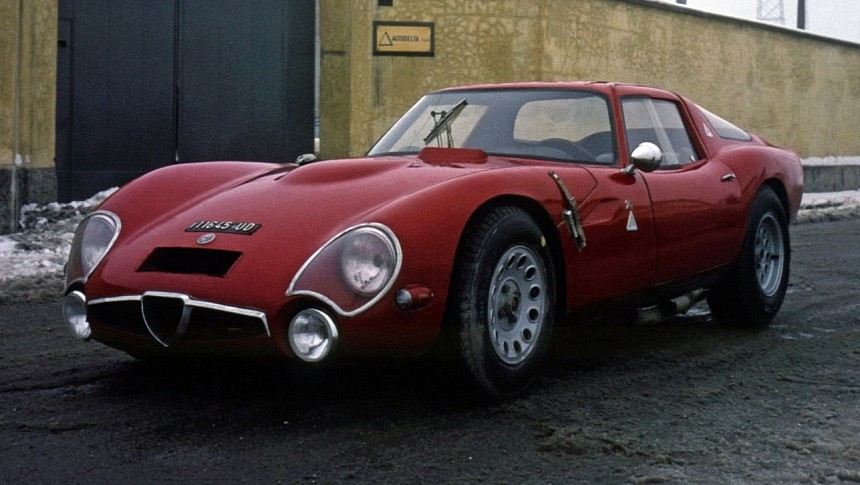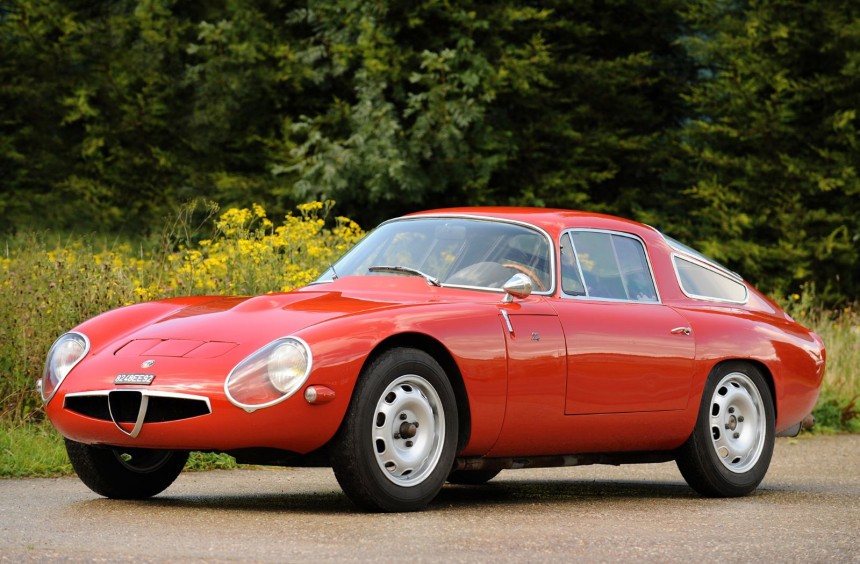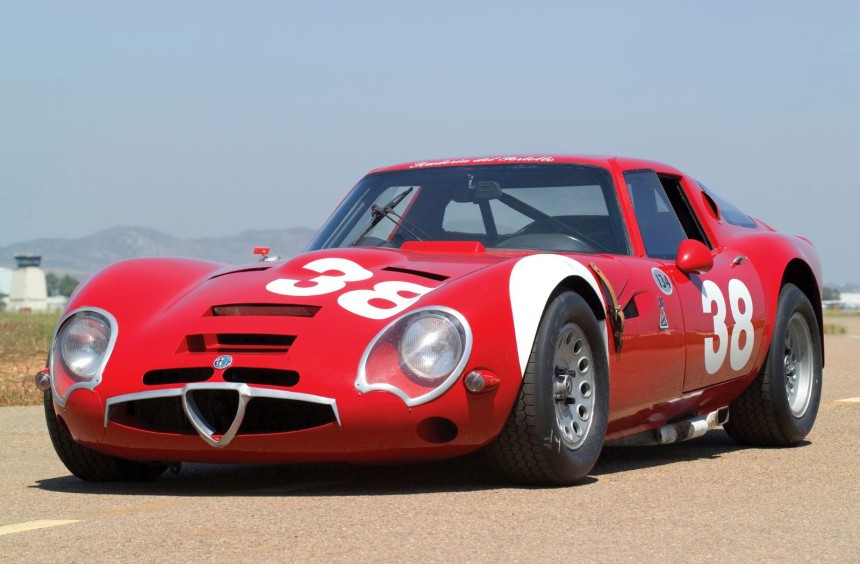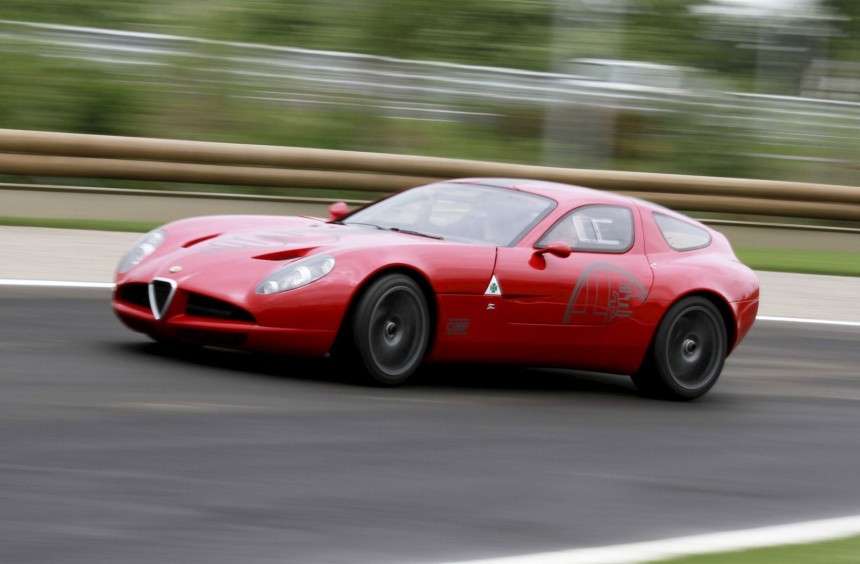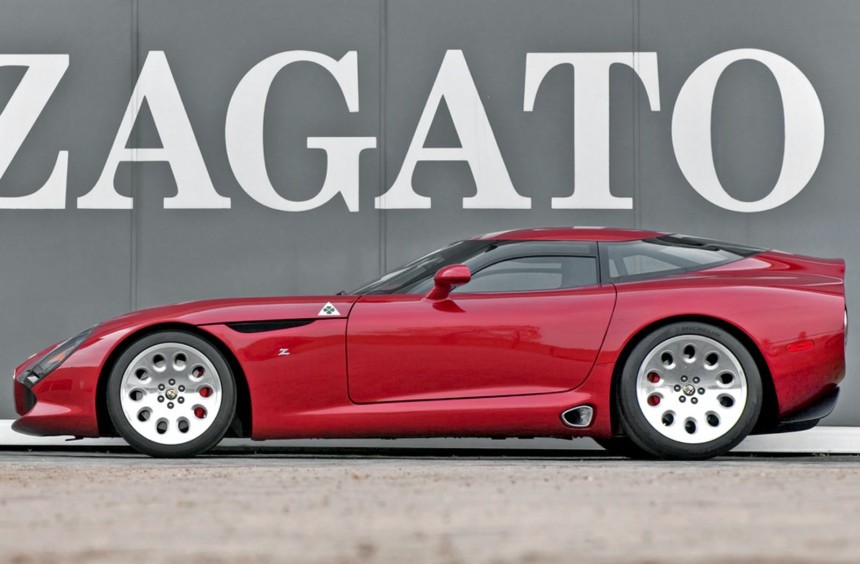Developed in partnership with famous Italian coachbuilder Zagato, the TZ family spawned three distinct automotive masterpieces that deserve to be remembered.
During its 113-year history, Alfa Romeo built some of the most exciting vehicles to ever roam on public roads and/or race tracks.
Though modern models have lost some of their originality, being built with chassis and drivetrain combos borrowed from other carmakers, Alfa Romeo-badged cars have always been renowned for their impeccable driving manners.
This trait originated in an era when Alfa was an independent manufacturer that prioritized motorsport success over mass production of road cars.
While that philosophy ultimately contributed to its demise as an independent carmaker, leading to a Fiat takeover in the 1980s, it also gave birth to Alfa's most legendary models.
The most famous of those models remains the original 33 Stradale from the late 1960s, but very close behind in the hearts of many die-hard Alfisti is the Giulia TZ (Tubolare Zagato) range.
The Giulia nameplate was initially attributed to a sporty little four-door sedan introduced in 1962.
Called Giulia TI, the car was powered by a 106-hp, 1.6-liter version of the company's famous Bialbero twin-cam engine designed by the legendary Giuseppe Busso.
That year, the Bialbero (beefed up to 160 hp in race trim), along with other components from the Giulia TI, were used to develop a new Alfa contender for the popular Gran Turismo (GT) racing competitions.
Unveiled at the 1962 Turin Motor Show, the new GT was built on a lightweight nickel-chromium tubular spaceframe chassis with fully independent suspension and disc brakes.
On top of the chassis sat a beautifully sculptured, Zagato-designed aluminum body that contributed to the car's low weight and aerodynamic efficiency.
In total, the exquisite GT christened Giulia TZ weighed only 1,460 pounds (660 kg), and thanks to its state-of-the-art four-cylinder, it could reach a top speed of 134 mph (216 kph).
Alfa only built 112 units between 1962 and 1965. They were available in 160-hp (race) or 112-hp (road) configurations.
The engineering teams at Alfa and Zagato continued work on improving the grand tourer.
At the 1964 Turin Motor Show, they introduced the redesigned Giulia TZ2, which featured a new fiberglass body that reduced weight by around 88 pounds (44 kg) and improved aerodynamics even further.
This new iteration was also powered by the 1.6 Bialbero, albeit with an all-new cylinder head that pushed output to 170 hp.
Unlike the first model, the TZ2 was exclusively developed for the track, with only 12 examples being built.
The car is famous for winning its class at the Targa Florio race in 1965 and 1966. During its short career, it also triumphed in the GT class at Monza, Sebring, and the Nürburgring.
Today, the TZ2 is considered Alfa's best GT race car, and, considering its low-volume production, the value of a surviving example exceeds the $3 million mark.
Those of us who aren't millionaires can enjoy driving the Alfa Romeo TZ2 in the Gran Turismo 7 video game.
The last of the original TZ cars left the factory gates in 1967. After that, Alfa switched its focus to an entirely new coachbuilt race car: the Giulietta SZ (Sprint Zagato)
However, that wasn't the end of the TZ story. In 2011, Alfa decided to celebrate 100 years of motorsport involvement by developing a modern version of its legendary GT racer.
Called TZ3 Corsa (dropping the Giulia nameplate), it was initially a track-only one-off commissioned by German collector Martin Kapp, but unlike its predecessors, it was based on an existing Gillet Vertigo.5 race car chassis equipped with an F136 Ferrari-Maseratti V8.
Also fitted with a unique Zagato body and tipping the scales at 1,874 pounds (850 kg), it was in the same lightweight league as the classic TZs.
But, with its 4.2-liter V8 spitting out 420 hp, it sprinted to 60 mph (97 kph) in 3.5 seconds, reaching a top speed of 186 mph (300 kph).
Besides the unique TZ3 Corsa, Alfa and Zagato assembled nine additional road-going versions of the modern, retro-inspired beast.
Though the bodywork was very similar to that of the Corsa, the Stradale was based on the Dodge Viper ACR-X chassis.
Of course, this angered a lot of Alfa Romeo purists, who argued that the Stradale wasn't a true Alfa, but for any objective supercar fan, the TZ3 was (and still is) an epic machine.
Combining the lightweight Zagato body with the ACR-X's race-proven chassis and monstrous 8.4-liter, 640-hp V10, the retro-inspired, coachbuilt masterpiece could accelerate to 60 mph (97 kph) from a standstill in 3.4 seconds and reach a top speed of 185 mph (297 kph).
Six decades after the first iteration was born, the TZ is still one of Alfa Romeo's most exquisite model ranges.
The lightweight construction and stunningly gorgeous Zagato bodies of each generation will continue to inspire and fascinate gearheads for generations to come.
Since the TZ2 is, without question, the most prestigious member of the family, I'll end this article by recommending that you watch the fantastic YouTube video below by RSRNurburg.
Though modern models have lost some of their originality, being built with chassis and drivetrain combos borrowed from other carmakers, Alfa Romeo-badged cars have always been renowned for their impeccable driving manners.
This trait originated in an era when Alfa was an independent manufacturer that prioritized motorsport success over mass production of road cars.
While that philosophy ultimately contributed to its demise as an independent carmaker, leading to a Fiat takeover in the 1980s, it also gave birth to Alfa's most legendary models.
The most famous of those models remains the original 33 Stradale from the late 1960s, but very close behind in the hearts of many die-hard Alfisti is the Giulia TZ (Tubolare Zagato) range.
The original Giulia TZ
Called Giulia TI, the car was powered by a 106-hp, 1.6-liter version of the company's famous Bialbero twin-cam engine designed by the legendary Giuseppe Busso.
That year, the Bialbero (beefed up to 160 hp in race trim), along with other components from the Giulia TI, were used to develop a new Alfa contender for the popular Gran Turismo (GT) racing competitions.
Unveiled at the 1962 Turin Motor Show, the new GT was built on a lightweight nickel-chromium tubular spaceframe chassis with fully independent suspension and disc brakes.
On top of the chassis sat a beautifully sculptured, Zagato-designed aluminum body that contributed to the car's low weight and aerodynamic efficiency.
In total, the exquisite GT christened Giulia TZ weighed only 1,460 pounds (660 kg), and thanks to its state-of-the-art four-cylinder, it could reach a top speed of 134 mph (216 kph).
Alfa only built 112 units between 1962 and 1965. They were available in 160-hp (race) or 112-hp (road) configurations.
The legendary Giulia TZ2
At the 1964 Turin Motor Show, they introduced the redesigned Giulia TZ2, which featured a new fiberglass body that reduced weight by around 88 pounds (44 kg) and improved aerodynamics even further.
This new iteration was also powered by the 1.6 Bialbero, albeit with an all-new cylinder head that pushed output to 170 hp.
Unlike the first model, the TZ2 was exclusively developed for the track, with only 12 examples being built.
The car is famous for winning its class at the Targa Florio race in 1965 and 1966. During its short career, it also triumphed in the GT class at Monza, Sebring, and the Nürburgring.
Today, the TZ2 is considered Alfa's best GT race car, and, considering its low-volume production, the value of a surviving example exceeds the $3 million mark.
Those of us who aren't millionaires can enjoy driving the Alfa Romeo TZ2 in the Gran Turismo 7 video game.
The modern TZ3 Corsa
However, that wasn't the end of the TZ story. In 2011, Alfa decided to celebrate 100 years of motorsport involvement by developing a modern version of its legendary GT racer.
Called TZ3 Corsa (dropping the Giulia nameplate), it was initially a track-only one-off commissioned by German collector Martin Kapp, but unlike its predecessors, it was based on an existing Gillet Vertigo.5 race car chassis equipped with an F136 Ferrari-Maseratti V8.
Also fitted with a unique Zagato body and tipping the scales at 1,874 pounds (850 kg), it was in the same lightweight league as the classic TZs.
But, with its 4.2-liter V8 spitting out 420 hp, it sprinted to 60 mph (97 kph) in 3.5 seconds, reaching a top speed of 186 mph (300 kph).
The TZ3 Stradale
Though the bodywork was very similar to that of the Corsa, the Stradale was based on the Dodge Viper ACR-X chassis.
Of course, this angered a lot of Alfa Romeo purists, who argued that the Stradale wasn't a true Alfa, but for any objective supercar fan, the TZ3 was (and still is) an epic machine.
Combining the lightweight Zagato body with the ACR-X's race-proven chassis and monstrous 8.4-liter, 640-hp V10, the retro-inspired, coachbuilt masterpiece could accelerate to 60 mph (97 kph) from a standstill in 3.4 seconds and reach a top speed of 185 mph (297 kph).
Six decades after the first iteration was born, the TZ is still one of Alfa Romeo's most exquisite model ranges.
The lightweight construction and stunningly gorgeous Zagato bodies of each generation will continue to inspire and fascinate gearheads for generations to come.
Since the TZ2 is, without question, the most prestigious member of the family, I'll end this article by recommending that you watch the fantastic YouTube video below by RSRNurburg.
